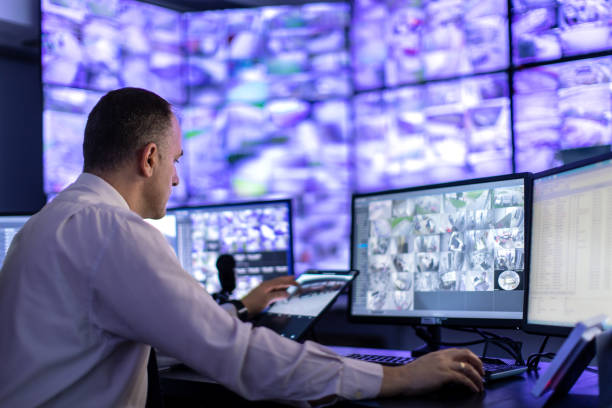Surveillance is one of the most powerful tools in a private investigator’s arsenal. It provides real-time insights, captures crucial evidence, and can often be the key to solving complex personal, legal, or corporate matters. But what actually happens during a private surveillance operation? Whether you’re a client hiring a PI or simply curious about the process, understanding what to expect can help you navigate the experience with greater clarity and confidence.
This guide explores the purpose, process, legality, and outcomes of a private surveillance operation conducted by licensed professionals.
What Is Surveillance in Private Investigation?
Surveillance is the covert observation of a person, place, or activity to gather information and document behavior. Private investigators use surveillance to collect factual evidence in various scenarios, including:
- Suspected infidelity
- Child custody disputes
- Workers’ compensation fraud
- Corporate espionage or internal theft
- Locating individuals or monitoring behavior
- Verifying daily activities or habits
The goal is not to invade privacy but to gather legal, actionable information that can be presented in court or used to make informed personal or professional decisions.
Initial Consultation and Case Assessment
The process begins with a detailed consultation between the client and the investigator. During this phase:
- Objectives are clarified: What specific behaviors or patterns is the client hoping to observe?
- Background information is collected: This includes names, photos, addresses, vehicles, routines, and any known associates.
- Legal boundaries are discussed: Investigators explain what they can and cannot do under the law.
- A surveillance plan is developed: This includes the number of operatives required, the schedule, equipment to be used, and estimated duration.
Transparency and collaboration are key. The more accurate and complete the client’s information, the more effective the operation.
The Surveillance Process: What Happens on the Ground
Private surveillance involves strategic planning, patience, and discretion. Here’s what typically takes place:
1. Pre-Surveillance Preparation
Investigators scout the target’s known locations (home, workplace, frequented areas) in advance to understand entry/exit points, parking options, and potential obstacles. This allows them to plan their position and identify surveillance blind spots.
2. Deployment and Observation
Surveillance operatives arrive before the subject is expected to appear. They may use:
- Vehicles: Unmarked cars or vans outfitted with tinted windows, cameras, and communication tools.
- Stationary Surveillance: Investigators park at a strategic location for extended observation.
- Foot Surveillance: When close proximity is needed, operatives may follow the subject discreetly on foot.
3. Evidence Gathering
Investigators document everything they observe using:
- Photography and video recording
- Voice notes or field reports
- Time-stamped logs of activities
All evidence is collected in a manner that complies with local privacy laws.
4. Real-Time Adjustments
Subjects can behave unpredictably, so operatives need to adapt quickly. They may change vehicles, coordinate with a second PI, or abandon a tail temporarily to avoid detection.

Man Sitting Inside Car Photographing With SLR Camera
5. Avoiding Detection
Good surveillance is invisible. PIs are trained to blend into environments, maintain appropriate following distances, and use natural cover to avoid suspicion.
Types of Surveillance Techniques Used
Depending on the case, PIs may deploy a combination of methods:
- Physical Surveillance: Direct observation, usually from a nearby location.
- Electronic Surveillance: Use of GPS trackers, hidden cameras, or motion detectors (within legal limits).
- Technical Surveillance: Monitoring of social media or digital communication (only publicly accessible or with legal permissions).
- Mobile Surveillance: Following the subject from place to place using vehicles or public transportation.
Legal Boundaries of Surveillance
A common concern among clients is legality. Professional investigators operate under strict ethical and legal frameworks. They:
- Do not trespass on private property
- Do not tap phones or hack computers
- Do not install illegal tracking devices
- Respect state and federal privacy laws
- Only record what is visible from public or legally accessible places
Licensed PIs stay up to date with laws in their jurisdiction to ensure evidence remains admissible and the operation remains lawful.
Client Involvement and Communication
While the surveillance is in progress, clients can expect limited but strategic communication:
- Updates: Investigators may provide real-time updates if necessary, but only when it won’t compromise the operation.
- Questions or Input: Clients can relay additional instructions, but sudden changes to the plan can disrupt the operation.
- Photos or Clips: In longer surveillance jobs, investigators may send samples of what they’ve captured as proof of progress.
Final Report and Deliverables
Once the surveillance operation concludes, the PI will compile the findings into a detailed report, which typically includes:
- Written narrative of events observed
- Time logs
- Photographic and video evidence
- Conclusions or assessments (where appropriate)
This report can be shared with attorneys, used in court proceedings, or kept for personal use, depending on the original purpose of the surveillance.

Common Challenges in Surveillance Operations
Surveillance isn’t always straightforward. Investigators often face:
- Unpredictable subject behavior
- Hostile or densely populated environments
- Changing weather or lighting conditions
- Technological limitations (e.g., battery life, signal interference)
- Legal constraints based on jurisdiction
Experience, preparation, and professionalism allow PIs to overcome these challenges while maintaining ethical standards.
When Is Surveillance the Right Tool?
Not every case warrants surveillance. It is most effective in situations where:
- Visual evidence is critical
- Behavior needs to be observed over time
- Other investigative methods have failed
- Legal proceedings require verifiable documentation
Some common examples include catching a cheating spouse, proving cohabitation in alimony disputes, verifying child safety in custody arrangements, or uncovering fraudulent insurance claims.
Conclusion
A private surveillance operation is a strategic, legally governed process that can provide powerful evidence and peace of mind. Whether you’re seeking the truth in a personal matter or building a case for court, knowing what to expect helps you partner effectively with your investigator and understand the value of their work.
Surveillance isn’t about violating privacy—it’s about uncovering truth where deception may exist. When performed correctly by licensed professionals, it is a responsible and impactful investigative method that often makes the difference between uncertainty and resolution.



